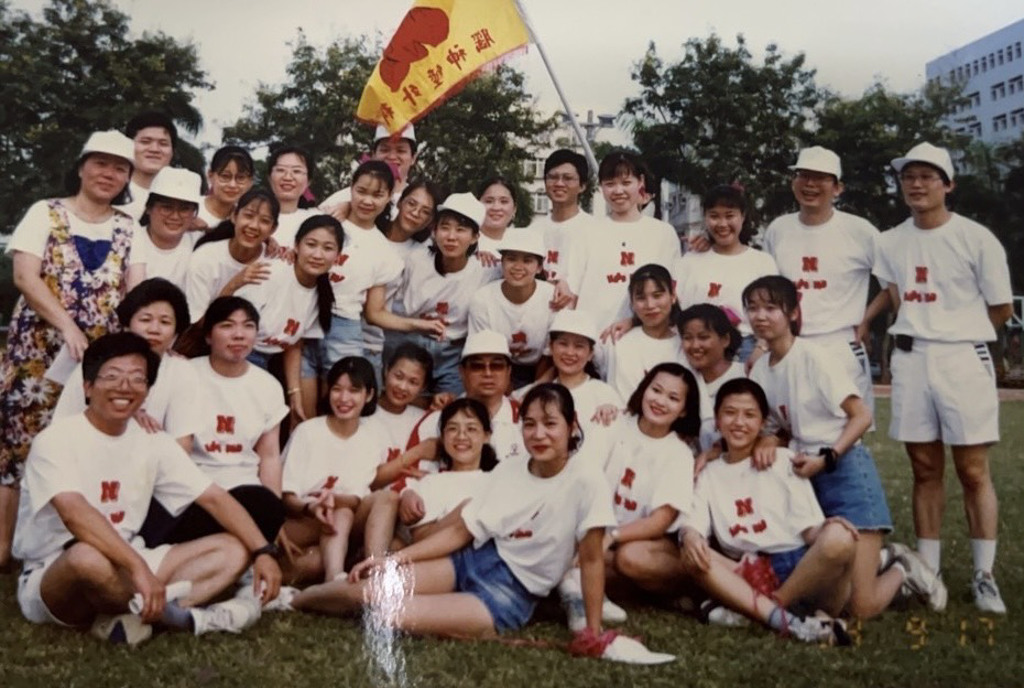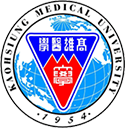Respectfully written by
Vice President Chih-Lung Lin
October, 2025 (Year 114 of the Republic of China)
The Apricot Grove Never Dies
The healer’s shade endures through time,
One flame of teaching — passed sublime.
In silent nights I think of Sun,
Clear winds and moon — his spirit shines.
Yesterday, after I explained a patient’s condition, one of her family members quietly followed me to the elevator. I thought she still had questions about the illness, but instead, she softly asked,
“May I trouble you for a few minutes to ask something?”
Just as the elevator door opened, I stopped in my tracks and looked at her expectant expression.
She asked, “Was that article online about Dr. Sun Cheng-Min written by you?”
I smiled and nodded, “Yes.”
Her eyes immediately brightened, as if she had rediscovered a long-lost light.
“I had brain surgery during my university years — it was Dr. Sun who operated on me. Sadly, I never had the chance to say goodbye when he passed away. Over the years, I’ve often searched online for anything about him…”
Her voice trembled; her eyes shimmered with remembrance.
At that moment, I once again felt how deeply a doctor can touch a patient’s life — transcending both time and death itself.
A surgery performed thirty years ago — perhaps long forgotten by the surgeon — remained forever engraved in the patient’s heart.
In her eyes I saw gratitude, regret, and the enduring memory of a truly good physician.
It was because of Dr. Sun Cheng-Min that I chose to devote my life to neurosurgery.
He was my senior and mentor at Kaohsiung Medical University — humble in character, brilliant in skill, and gifted in writing — a true exemplar in the hearts of his students.
I still remember following him on ward rounds, watching how he patiently and gently explained each condition to worried families, easing their fears with calm understanding.
That moment left an indelible mark in my heart.
In the operating room, his focus was unwavering, his movements precise and steady — an image that commanded admiration and respect.
Yet fate can be cruel.
On March 9, 1997, a drunk-driving accident took his life.
That day, the entire medical community was overcome with grief.
Through tears, his wife said,
“Today the driver didn’t just kill my husband — he killed the hundreds of lives my husband could have saved.”
His child also lamented, “More than ten years have passed, yet the same tragedies still happen.”
After his passing, Dr. Sun’s family donated his body to medical education — he became a teacher once more, offering his final lesson through his own body.
It was both a shock and a revelation.
At that moment, I made a vow — to follow his example, to dedicate my life to carrying on his spirit and protecting more lives.
From then on, I truly began my path in neurosurgery, studying under Professor Hung Chun-Lung — a mentorship that has lasted more than thirty years.
Doctors and teachers share the same sacred mission — one saves lives, and the other teaches others how to save lives.
In Japan, both are called sensei (先生);
in Chinese, we say physicians belong to the “apricot grove” (杏林), while teachers stand upon the “apricot altar” (杏壇).
A clinical teacher embodies both roles — healer and educator.
Especially in surgery, where skills are passed from master to apprentice, the Japanese title sensei carries profound respect.
Thus, we students affectionately called Dr. Sun “sensei.”
Dr. Tu Tsung-Ming, the founding president of Kaohsiung Medical University, once said on his ninetieth birthday:
“All my life I have taught, though I have never practiced medicine myself. Yet I have educated thousands of students who now care for patients and safeguard people’s health.”
He added, “Until my final moment in this world, I can still say with a clear conscience: I have done my utmost to advance the beauty and progress of medicine in Taiwan.”
This passage, recorded by Chuang Yung-Ming in ‘Taiwan’s First Doctor of Medicine’ (in Representative Figures of 20th-Century Taiwan, Lin Heng-Che editor, Spring Wind Culture, 2001), perfectly echoes Dr. Tu’s lifelong motto — “Learning above all, research first” — which has also become a guiding spirit of Kaohsiung Medical University.
Dr. Sun led by example, teaching through both words and deeds.
In those years, before helmets were mandatory and before strict drunk-driving laws existed, neurosurgeons capable of treating head injuries in the Kaohsiung–Pingtung region were few.
He once shared a story:
A man with a severe head injury was rushed to a hospital in Pingtung. Dr. Sun was urgently called from Kaohsiung, and upon assessing the case, he recommended immediate craniotomy to save the patient’s life.
The family hesitated, worried that medical resources in Pingtung were limited, and decided to transfer the patient to a hospital in Kaohsiung.
Not long after, Dr. Sun received another emergency consultation — at that Kaohsiung hospital — and to his surprise, it was the same patient.
Still undecided, the family transferred the patient yet again — to another hospital across the street — and once more, they found Dr. Sun waiting.
Finally convinced, they brought the patient to Kaohsiung Medical University Hospital, where under Dr. Sun’s skilled hands, the operation succeeded, and the patient was saved.
That story became not only a legend of surgical excellence but also a testament to medical virtue.
“To be a surgeon, one must be bold, meticulous, and forgetful,” Dr. Sun often told us.
Bold — to make decisions fearlessly in moments of crisis;
Meticulous — to maintain compassion and steadiness beneath the scalpel;
Forgetful — to learn from mistakes, let go of failure, and rise again from loss.
Six years of mentorship left me with lessons for a lifetime.
Dr. Sun often shared stories from his medical journey, full of warmth and humanity.
I have always regarded him as my role model and aspired to become a good doctor like him.
Though our time as teacher and student was short, its impact was profound.
Through his practice, he inspired me; through his life, he taught me the essence of medicine — “benevolence never ceases.”
Over the years, whether at airports, train stations, conferences, or marathon events, I am often greeted by former students:
“Hello, Professor Lin!”
Sometimes I cannot recall their names, nor when I taught them, but that warmth in their voice always moves me deeply.
Occasionally, an old photo taken together brings those memories flooding back.
In those moments, I realize that a teacher’s spirit continues through each new generation.
In hospitals and beyond, I sometimes meet patients or families who approach to greet me, telling me about their recovery, or expressing gratitude on behalf of loved ones who have passed away.
That single phrase — “Dr. Lin” or “Professor Lin” — is the warmest affirmation one could receive.
Because sincerity and dedication — people can always feel them.
This year, while serving as a judge for the Dr. Sun Cheng-Min Literary Award, I once again felt the far-reaching influence of my teacher.
Education, like the wind, is invisible yet powerful — you may not see it, but you will always witness its effects.
Teacher, thank you for using your life to define the true heart of a healer.
How fortunate I am to have grown under your guidance.
All I can do now is to transform this gratitude into the strength to heal and to teach —
so that your spirit, within the apricot grove and in the hearts of the Kaohsiung Medical University family, will never cease —
that this love and legacy may continue forever.

恩師孫楨民醫師(前排左一)深深影響林志隆(後排右五)一生行醫態度。圖為1993年高醫外科運動會,神外人員齊聚合影。(林志隆提供)
